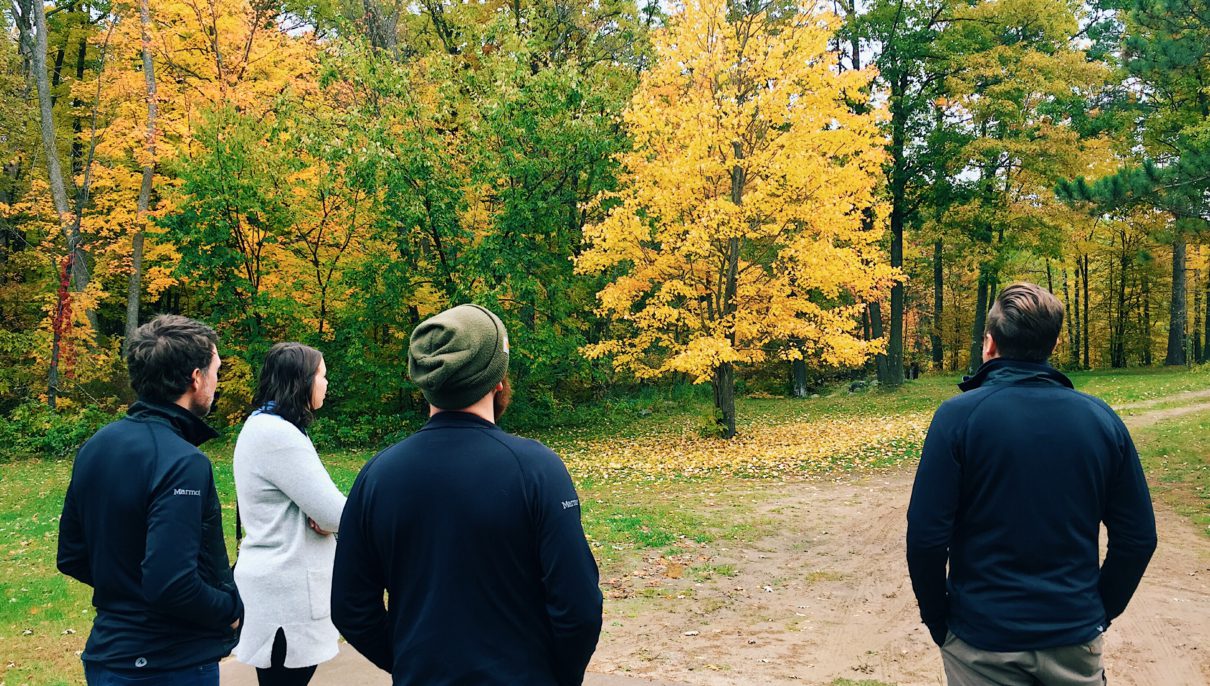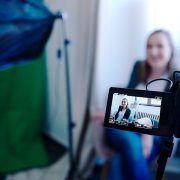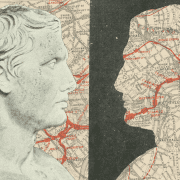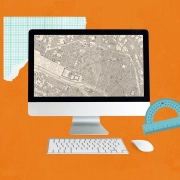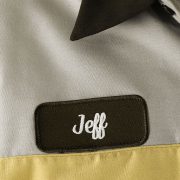Thoughts on Design Camp 2018
Our content team voyaged north to Design Camp for inspiration from leading creatives, technique sharing and time together. Here were some takeaways from the team:
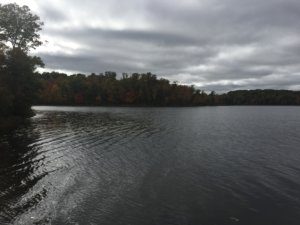 The theme of this year’s Design Camp was “Inside Out” and the goal was for everyone to put it all on the table—personally, professionally and creatively. As a classic reserved Midwesterner, my first reaction when I heard this was, “No, thank you.” But as I listened to the speakers and presenters share their stories, the more I started to think that maybe I do have a story of my own to tell. I have always shied away from doing personal work, believing that my purpose as a designer could only be derived by creating things for other people. But the presentations left me questioning the assumption that creating something for myself is inherently incompatible with creating things for other people.
The theme of this year’s Design Camp was “Inside Out” and the goal was for everyone to put it all on the table—personally, professionally and creatively. As a classic reserved Midwesterner, my first reaction when I heard this was, “No, thank you.” But as I listened to the speakers and presenters share their stories, the more I started to think that maybe I do have a story of my own to tell. I have always shied away from doing personal work, believing that my purpose as a designer could only be derived by creating things for other people. But the presentations left me questioning the assumption that creating something for myself is inherently incompatible with creating things for other people.
This idea culminated in the final keynote from illustrator Andy J. Pizza who talked about how looking at gig posters had helped him dig himself out of a depression. Something that was meant to be functional and ephemeral had become someone’s lifeline. As designers, we have very little control over what happens to our work once it has been released into the world. Most often, we worry about people misunderstanding or even ruining our work, but isn’t magical to think that our work could be thing to turn someone’s life around?
So, still being a Midwesterner, I of course did not voice any of the ideas that were running around in my head during the actual weekend, but it has got me thinking about how I can use design to tell my own story. Because, maybe, there is someone out there who needs to hear it.
– Kirstie
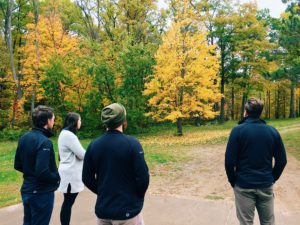
Plaidurday 2018
Design Camp 2018 was a great opportunity to glean new techniques and meet skilled designers, but the most important takeaway I had from the experience was that even the most veteran designers out there undergo the same brief moments of doubt and near-burnout that all creatives do. Not only do they have these moments, but their experiences have taught them how to systematically push through these obstacles and return to creating their best work. We able to hear these and learn from these stories thanks to the vulnerability the keynote speakers were willing to show us, so I think we can all agree that we’re endlessly thankful.
– Joel
Design Camp was a fantastic weekend of fellowship and learning for our design team. We studied and discussed the creative process, inspiration, and collaboration and came home with some great tools to improve our work. One teaching theme emerged for me from a number of the speakers, and reflects a comment from a famous athlete:
”It seems like the harder I work, the luckier I get.”
A number of speakers reflected on how they fought through low periods of creativity or dead periods of work. For those that found their way through these periods, a common theme was ”just keep working.“ Work projects, personal projects, passion projects—find a way to keep working and producing. It was often this work borne in low periods that created the exposure or inspiration for future successful work. This kind of ”luck,” obviously, is created through dedication and intentional focus, and all creatives need to find a way to fight through their low periods and breakthrough. At MJM, having a great team of creatives around to work with and create with definitely helps support each individual creative as they work hard and create more luck!
– Logan
 I have one core or foundational belief about creativity. It’s that new ideas are simply new combinations of familiar things. This concept of combinatorial creativity is only reinforced by conferences like Design Camp. It’s incredibly invigorating to spend a weekend retreat with like-minded designers and thinkers, getting inspired by the journey others have taken and the things they’ve learned along the way.
I have one core or foundational belief about creativity. It’s that new ideas are simply new combinations of familiar things. This concept of combinatorial creativity is only reinforced by conferences like Design Camp. It’s incredibly invigorating to spend a weekend retreat with like-minded designers and thinkers, getting inspired by the journey others have taken and the things they’ve learned along the way.
One of the workshops outlined a technique for ”Bulletproof Ideation” by combining ideas in a methodical fashion. We learned about the Bedno Diagram – a tool invented by designer and educator Ed Bedno—which provides a framework for seeing and exploring the intersection of multiple ideas. The process was very familiar, but I had never seen it implemented so thoroughly and methodically. And I was inspired by the suggestion to use the technique to reverse engineer ideas that have inspired me, to understand how their creator may have arrived at that solution. It was a good reminder that good ideas don’t come out of thin air, delivered by a muse in a ”eureka” moment. They are intentionally crafted and combined, and are accessible to all who are willing to work rigorously for them.
That last point connects back to the final keynote speaker, Andy J. Pizza. He shared the highs and lows of his creative journey, and wisdom he gained along the way, with the ultimate conclusion that there are no shortcuts for a fulfilling creative career. You have to do the work. And sometimes you have to struggle for it. That struggle might look like an exhaustive Bedno diagram, or piles of discarded concepts on the way to one workable solution. Learning to enjoy the process and to see it as intrinsically valuable is the key to going far.
– Brady
No matter what you want to learn, most skills and ideas are available to anyone who is interested through YouTube tutorials and Skillshare classes. You don’t need to drive halfway to Canada to find inspirational speakers or to learn interesting new techniques, but our design team does exactly that every year.
AIGA Minnesota’s Design Camp is a yearly retreat just outside Brainerd, MN. Each fall the MJM design team makes the trek up to northern Minnesota, and while the workshops and the speakers’ portfolios are interesting, to my mind they are not the most valuable part of the experience. The reward that compels me to make the trip is perspective.
This year that perspective had less to do with design methodology, new paper options, or printing techniques—it was something deeper. I felt like I heard two different answers to the question, “What is your work for?” Some of the speakers I heard and the designers I met talked about the scope of their portfolio and the size of their audience; they spoke about their personal brand and their career path. Good work equals more glory. Other people focused on the lives they had touched, the students they had taught, and the relationships they had formed with clients and colleagues over the course of their career. Good work means better relationships with people.
“What is your work for?”
Looking at my own past work, some of it has held up well, but much of it has not. Projects I worked on even 6 months ago can sometimes cause me to cringe. But the relationships I’ve developed with coworkers, students and clients are evergreen. Last year’s projects are getting stale; last year’s relationships are still a source of joy. Do the work, and enjoy the process, but don’t look to your work to make you happy. The work (whatever it is) is valuable, but it’s really only a backdrop to the things that matter most.
– Tim
Alison is a graphic designer and social media lead at Matt Jensen Marketing.

